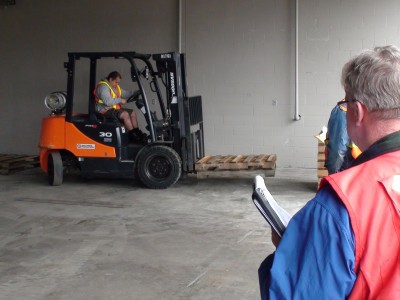
There is a lot of information out there about training. It seems that any sort of training, from fighter pilot to fast food cashier, is subject to the opinions and criticisms of just about anyone that cares to impart one or the other. Not that training isn’t a topic worthy of debate, heck I have been known to impart my opinions and/or criticisms (some would say rants) on the matter, regardless of whether it was asked for. However, there is something about the trend that the ongoing dialogue (or diatribe) seems to be taking that bothers me. It seems that many are of the opinion that during training, something is being trained/taught whereas in my opinion, someone is.
You might think this is an insignificant difference but I disagree. I believe that if we concentrate on the thing that must be trained as being the topic, concept, idea or message that must be conveyed, then we allow it to become the central focus. Alternatively, if we concentrate on the person, then our focus is where it belongs. And who should this focus be coming from? You, the trainer.
The trainer is not only at the heart of the matter, the trainer is the heart of the matter. People can get information from many sources like books, computers, observations, or through interaction with other people, but training is much more than a process of dispensing and absorbing information. It is more about learning and understanding a topic and then being able to use the information learned to do something, like operate a forklift, aerial lift or loader properly.
The understanding and doing elements are critical components in the overall training process and books, computers, observations or even (casual) interactions with others on their own will do very little, if anything, to enhance the understanding or performance of an equipment operator.
As the trainer, you are the engine that drives everything, the heart and soul that brings the information in the manuals or computers to life by helping people visualize, realize and most importantly relate the ideas, concepts and procedures within the information to what they actually do.
For example, during forklift training, the concept of the stability pyramid is discussed which, when pared down, is simply a way to help trainees understand that the higher the lifting mechanism goes, the less stable the machine becomes. Many good trainers get this concept across well in that their trainees can write it down, explain it or otherwise demonstrate that they understand it. However, there is still another step to take to ensure that they not only understand the concept, but how their understanding is to be applied. To continue with the example, after the trainee demonstrates their understanding of the stability pyramid concept, a good question to ask might be, “Now that you understand that the machine (any lifting machine, not just a forklift) becomes less stable, how is that going to affect how you drive it?”. If you are met with blank stares (not good) add, “What is it that you’re not going to do?” Of course, what you want to hear is “I’m going to get my mast (or bucket or platform) down as soon as possible” or “I’m not going to drive around with my mast (etc.) up” or other similar wording.
The bottom line here is that training should never be left to the information source (manual, computer, etc.) alone. In fact, by definition, books and computers are not capable of training, only people are. At least that’s this trainer’s opinion.
Rob Vetter
Director of Training
IVES Training Group
Did you enjoy this article? Sign up for our newsletter to receive more like this!